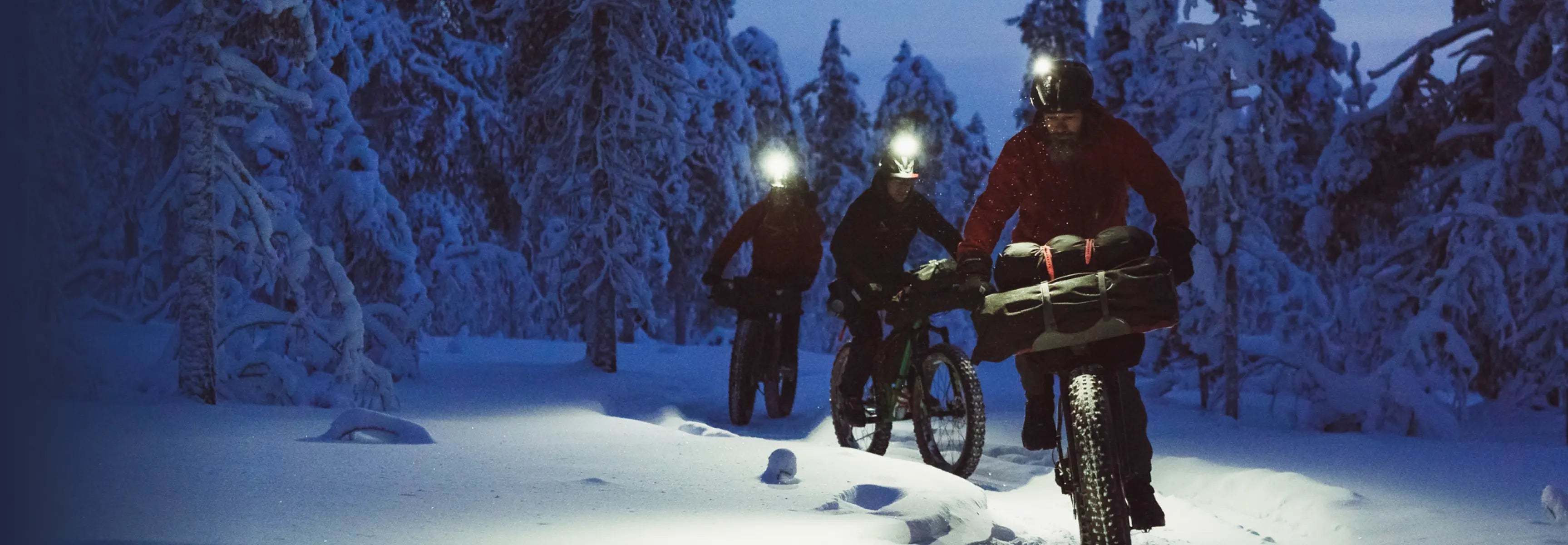
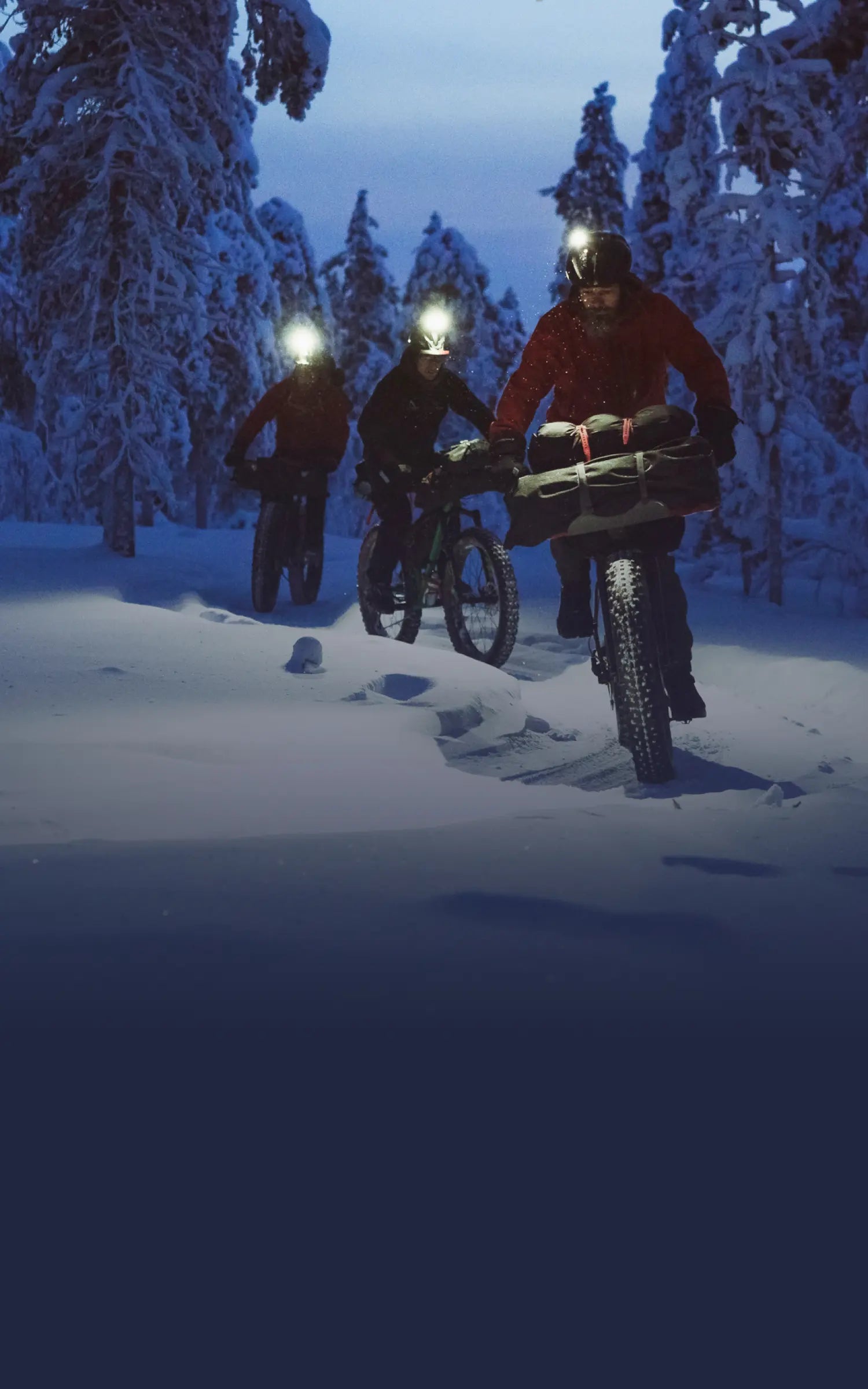
Suunto Blog
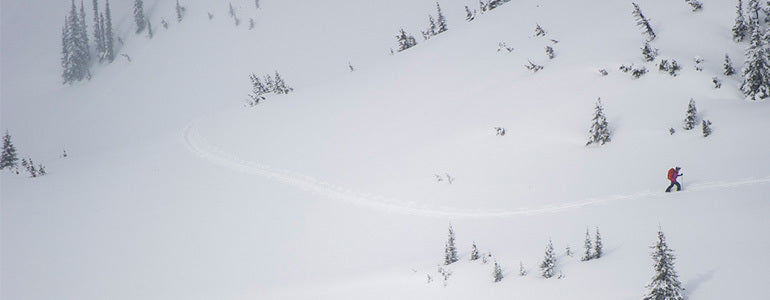
How to stay warm this winter
Understand there’s no magic solution
Breathable, waterproof, windproof – remember there’s no magic gear solution that works for everything. It’s possible to go cross-country skiing in -15ºC in just a base layer and shell. Wear that while ice climbing and you’ll start turning blue pretty quickly. Equally, you may need all the layers you can wear in +5ºC if it’s wet and windy. Remember there are always compromises – and you’ll never get it totally right.
Greg Hill pushes through an icy day. © Bruno Long
Experiment with what works
No two people are the same – a big guy with a lot of mass may be quite happy in little more than a t-shirt while if you have the figure of an ironman athlete, you may need an insulated jacket and mittens to enjoy the same level of warmth. Experiment between synthetic and wool base layers. If you’re a copious sweater, you may lean towards the former. If you need the warmth, go for wool.
Bring spares - of everything!
There’s nothing better after a strenuous hike to a summit peak than ripping off a sweat-soaked base layer and putting on a fresh one. OK, the stripping-off part is not so fun – especially if it’s windy! – but we promise it’s worth it. On longer days, taking your boots off and swopping socks will also make your smiles last longer. Change your gloves regularly, see below…
© Bruno Long
How many gloves is ok?
How many pairs of heels is it ok for a girl to have – probably not as many as the number of gloves it’s ok for the winter sports athlete to have. Have a look in any winter climber’s closet and you will find dozens and dozens of pairs. Take two to three with you on the hill. Cheap fleece gloves are awesome for when you’re moving and in between technical sections. Switch gloves between stages, depending on your activity. Keep the spare pair inside your jacket to keep warm. Still have cold hands? See #6 & #7.
Dress for 15 minutes into your activity
Remember that overheating and sweat in particular is the #1 enemy. The best way to chill a bottle of white wine is to stick it in a bucket of iced water and let the breeze do the rest. Dress for how you’ll be in 15 minutes time not how you’ll start. Better to begin a bit chilled and then warm up, than start pouring with sweat after a few minutes and have to stop and shed layers.
Put a hat (or anything) on
Since scientists debunked the myth that 70% of your body heat is lost through your head, the old adage that ‘if you’ve got cold hands you should put a hat on’ seems out of date. But it’s still a valid reminder that you should think ‘big picture’ when it comes to cold hands. Hands and feet get cold because the rest of your body’s cold; so putting on a warm layer, wearing a hat and pulling up your hood is still a case of old school is best. Remember also there’s no magic pair of gloves out there.
Cure your cold hands for good!
Always get cold hands or feet? If you’ve suffered from a cold weather injury (such as frostnip) chances are you’ll battle cold hands the next time the mercury drops, but contrary to conventional wisdom, there is something you can do about it (provided it’s not something else like Raynaud’s disease, in which case check with your physician). Doctors at Britain’s Institute of Naval Medicine discovered that rewarming your hands or feet in a warm bath over a course of several weeks can completely reverse the effects of a cold weather injury. Fill a foot bath with water at 40ºC, have a slug of your favorite tipple (alcohol opens up the blood vessels) then soak your feet or hands for 20 minutes. Repeat every night for several weeks.
MAIN IMAGE: © Bruno Long
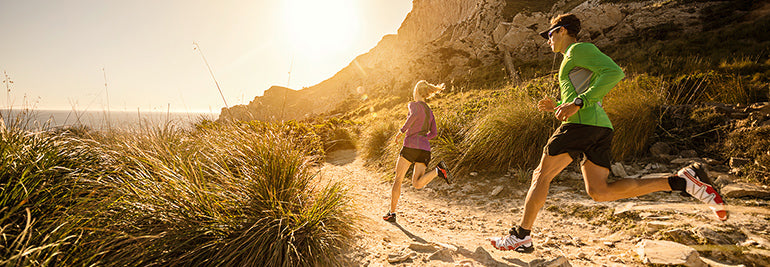
HOW TO USE RUNNING POWER WITH AMBIT3
Power meter measures the amount of physical effort needed to perform a certain activity, like running. The effort is measured in watts. Training with power isn’t anything new in cycling, pros have been using power meters to target their training since the 80s, but only recently power meters have started to break-through in running.
The main advantage gained with a power meter is precision. The power meter reveals exactly how hard you really work and how much power you produce. It is also easy to see progress when analyzing the watts.
3 BENEFITS FOR RUNNING WITH POWER
1. Get immediate information on your effort. Power reacts to your effort faster than heart rate and e.g. on uphills and intervals it reacts immediately. Pacing yourself using running power is more accurate than following heart rate or running pace.
2. Follow your running efficiency using running power. The lower power you use to run on a certain pace in the same conditions, the more efficient you are.
3. Evaluate how tough a certain running course is. As running power is not affected by heart rate you can classify a running course in terms of running power and follow how your heart rate and running pace develop on that course.
ALL AMBIT3 WATCHES ARE NOW COMPATIBLE WITH STRYD
All Ambit3 watches are compatible with Stryd power meters for running. The power meter is paired as a heart rate belt and measures heart rate and running power in watts. (Please note that although compatible with Stryd power meter for running, the Ambit3 Run is not compatible with power meters in general.)
In addition to pairing the Stryd power meter, you should adjust your sport modes also to include power.
RUNNING POWER WORKS WITH MOST AMBIT2 WATCHES TOO
Stryd power meter for running is compatible with all Ambit2 watches except Ambit2 Run. With Ambit2 watches, the Stryd power is paired as a heart rate belt and a Power POD and sports modes must be set to search for both sensors.
READ ALSO:
10 AMBIT HACKS FOR RUNNERS
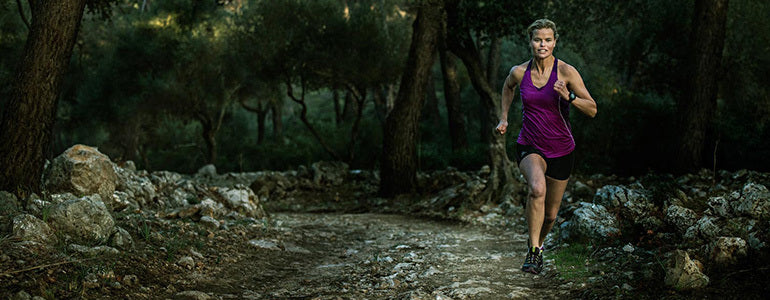
5 yoga moves for runners
We all know that yoga is a good way to stretch and recover in between your training sessions. But which exercises in particular work best for runners? We asked yoga teacher and triathlete Sarah Odell. For all postures, aim to hold for a minimum of 30 seconds or five deep breaths.
The Butterfly The Butterfly is really good for opening up the hips. It stretches the inner thighs and brings release to the lower back, particularly if you have tight hamstrings. If you find it difficult to keep your back straight, sit on a cushion, block or book to raise your hips so they’re higher than your knees. In the image below I’m sitting on a block.
Banarasana: the lunge (variation 1) This is great for tight hip flexors and hamstrings. Make sure the front knee is directly over the ankle and also that it’s not rolling inwards. The knee should be in line with the second toe. If you’re on a hard surface, place a towel or cushion under your back knee. To increase the stretch, place your hands on the inside of your front foot, and to go deeper still, bring your elbows down as well.
Banarasana: the lunge (variation 2) Here you’re getting an intense stretch into the quadricep muscles at the front of the thigh. It’s important to keep your hip bones facing forwards. Start with one arm and then try to catch your foot with both. It’s also great for the front of the chest. Push your foot away from your hands to increase the stretch.
Malasana: the squat The is a great stretch for the ankles, groin and back. If your heels don’t touch the ground you can place a folded mat or blanket underneath, as I am in the image, for better balance to hold the posture longer. By placing the elbows against the knees you are stretching the inner thighs. Think about lengthening the tail bone towards the ground, keeping your back long and your chest open.
Viparita Karani: legs up wall
Swing your legs up, making sure you’re flat against the wall. If you have tight hamstrings, place a folded blanket underneath your buttocks and lower back to lift your hips. Let the legs fall out to the side and relax your upper body. If you have just come back from a run, this is very restorative, helps to flush the legs, relax the back and let the blood flow freely back to the heart. Combined with some deep breathing it’s also a great way to relax before going to bed. Vary this pose with the legs together or bend your knees, bringing the soles of the feet together, as in the Butterfly (see top).
Sarah Odell is a former adventure racer and triathlete. She teaches yoga and pilates at various health clubs and retreats.
MAIN IMAGE: © zooom.at/bergermarkus.com

Ready for adventure in 2016
Suunto is proud to work with many amazing athletes and adventurers from all over the world, including our global ambassadors. We caught up with some of them to ask about the highlights of 2015 and what’s happening for them in 2016.
Speed alpinist Ueli Steck – the Swiss Machine
Highlights: Retaking the speed record for climbing Eiger was one of Ueli’s most satisying moments in 2015. Climbing all 82 of the 4000 m mountains in the Alps in a couple of months was also a great and liberating experience for him. His goals for 2016: To climb a new route on 8027 m Shishapangma’s south face, to take on some ultra distance trail races over summer, to keep moving physically and to continue developing his skill set as an alpinist.In one word, Ueli feels: “Great!”
© Ueli Steck
Mountain athlete Kilian Jornet
Highlight: Enjoying everyday, achieving great results and staying versatile in all distances and disciplines is what Kilian is most pleased with in 2015. His goals for 2016: First, it’s the ski mountaineering world cup. Then, the big project is attempting a world record speed ascent on Everest over summer as part of his Summits Of My Life project and, finally, some trail races. “To wake up, see a mountain every single day and go for it!” he says is his main motivation for 2016. In one word, Kilian is feeling: “Excited!”
© Kilian Jornet
Underwater explorer Jill Heinerth
Highlight: Being a TED presenter at the annual TED Youth broadcast in New York City was one of Jill’s proudest moments in 2015. Her talk reached more than 100,000 young people worldwide. Her goals for 2016: To slow down a little and enjoy her second passion in life – cycling. Aside from riding trails in Ontario, Jill and her husband hope to make cycle trip across the US, from Florida to their home in Canada. Jill is also returning to Newfoundland to explore a flooded iron ore mine and also WW2 shipwrecks. One word, Jill is feeling: “Excited!”
Triathlete Åsa Lundstrom
Highlight: Receiving emails from fans telling her that she has been an inspiration to them is one of Asa’s most rewarding experiences in 2015. Her goals for 2016: To place in the top 10 of women at the Ironman World Championships 2016, plus smaller goals for each discipline, and to be on the podium at every race she competes in. In one word, Asa is feeling: “Fortunate.”
© Orca
Backcountry skier Greg Hill
Highlight: For Greg, 2015 has been a year of rehabilitation after a serious injury in 2014. He turned 40 this year and is proud of where he’s at in life. “To be happily married, with two great kids, a cosy house and a reputation for being a solid mountain adventurer – it's all I could I'd ever ask for,” he says.His 2016 goals: To get as strong as he has ever been, some big 40,000 ft (12200 m) days in the mountains to celebrate his 40th, and speed traversing his local mountain range. The 200 km plus traverse normally requires two 10 day trips, but Greg aims to do it in two to three days. In one word, Greg is feeling: “Energized."
Mountain athlete Emelie Forsberg
Highlights: The fact that she still loves running, skiing and mountaineering as much as she does after years of it being her "work" is something Emelie is really happy about. Her four skyrunning victories and setting a new record at the Mount Marathon Race in Alaska were also satisfying achievements. Her goals for 2016: To become a faster and more all-round runner.In two words, Emelie is feeling: “Super excited!”
© Selu Vega-Transvulcania
MAIN IMAGE: © Jordi Saragossa
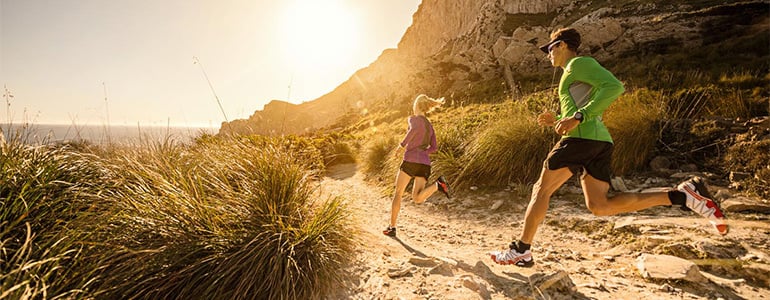
How to plan your training for the year ahead?
When it comes to the art of training endurance athletes, Jason Koop is the man. Koop, as his athletes call him, is Director of Coaching at Carmichael Training Systems and has written a book called Training Essentials for Ultra Running, to be published this coming spring. We caught up with him and got six tips to help you plan your coming training year.
Time travel 12 months ahead
Before sitting down to map out your annual training plan, go for a walk and do this mental exercise: transport yourself forward to December next year and imagine looking back at the preceding 12 months and asking yourself what it is you’d like to see. If you had the best year ever, what would that look like? What adventures or events would make you go, that was awesome! This will help you identify what you’re really passionate about doing, and sometimes it’s not what you think. When you connect with your emotional intelligence, you get much better answers.
Look at the big picture first
It’s not uncommon for people creating an annual training plan to get bogged down in the details. At this time of training cycle, however, you don't need to get down to the nuts and bolts and nitty-gritty just yet. Instead focus on the big picture and worry about the smaller details later. For now, start at race day and work your way back, plotting and planning the major blocks so you stay ahead of the game and avoid having to play catch up. Go from general to specific
Once you've looked at it from a big picture perspective, then you can start to think about moving your training from less to more specific. The longer you are away from the race the less specific and more general your training can be. You can apply this strategy to any kind of endurance race, whether it's a marathon, an ultra marathon or a 20 km trail race. Specificity of training can encompass a lot of different things – the terrain, the intensity of the event, elevation gain. Even the gear that you use – footwear, pack and poles – should become increasingly specific as race day gets closer.
Recruit your support team
Whether it’s your significant other, your family, your running group, or all of the above, getting them invested in the whole process, especially if your goal is really audacious, is crucial. The more people that you have in your corner who understand what you will have to sacrifice and go through, the better for your long-term training process. They can help out with things and offer encouragement. People can't encourage you if they don't know what you're doing.
Proclaim it loudly
If you have something big or crazy planned, stand on a table – or on Facebook – and proclaim it loudly and clearly. You need to do this because it becomes another form of motivation and pressure that will help you achieve your goal.
Track your progress
Tracking your progress with a Suunto watch and sports diaries like Suunto app or Strava will help you compare where you are from one month to the next. Spending some time now working out how your going to track your progress will help in the long run. Ask yourself now what progress indicators are important for you to keep an eye on.
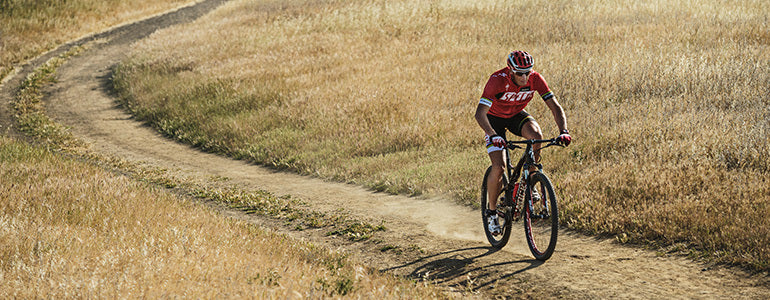
7 off-season tips for triathletes
When it comes to triathlon, there's one man who is supremely qualified to offer coaching – that's the Caveman – and after retiring from professional racing this year Conrad Stoltz is now, he says, "an open book" ready to give away his trade secrets. The four time Xterra World Champion and three time ITU Cross Triathlon World Champion has started his own coaching business, Stoltz Training, and is already being sought after by upcoming athletes. With the off season here, we asked him for some coaching tips on how to use the time wisely.
Don't do too much
After a long, hard season with lots of sacrifices, its very important to recharge physically and especially mentally. Taking time off serious and structured training is crucial for a long and sustainable sporting life. Triathletes tend to be hard driving, over achievers, so getting us to slow down and let go can be tough. But a good, relaxing off season of three to six weeks is key to climbing new heights the following season.
Click for recovery wisdom from the Caveman
© zooom.at/Markus Berger
"Climb a mountain. Paddle a river. Surf. Take the opportunity to have fun and play."
Don't do too little
Don’t let “Ice Cream and Beer Season” get out of hand, as after three weeks, it gets increasingly hard to come back and drop the weight. As one gets older (mid 30s and later) it takes longer to come back from excessive loss of fitness. So stay active by doing other fun sports. Climb a mountain. Paddle a river. Surf. Fatbike along the coast or in the desert. Try a team sport. Take the opportunity to have fun and play. But know your limits – you’re only a triathlete; we’re not used to over eager rugby tackling or direction changes.
Get perspective
After some time spent unwinding and the emotions have settled, one can look into the rearview mirror and learn from the year gone by. What did you do right? Pat yourself on the shoulder and enjoy your hard earned successes. Learn from mistakes. How will you avoid them? Dream about the upcoming year. What makes you tick? Do more of that.
Click for Conrad's transitioning tips
© zooom.at/Markus Berger
Time for change
Be it raising your saddle height, changing shoe brand, implementing weight training, or trying a new diet. The off season is the perfect time for change.
Remember to rehab
Now is the time to rehab unresolved injuries or correct imbalances and weaknesses. Consult with an expert and use the off season to heal the body and mind so you start the season motivated and ready to go.
Enjoy, but in moderation
I once gained a whopping 8kg (18lbs) in the off season, and in hindsight, the fun of putting it on was not worth the hassle of losing it.
Come back slowly
Rookie mistake number one: Start training like a beast the first week! All that built up enthusiasm and energy will make you feel like Superman, but don’t do it! Don’t try to test your fitness or lose that holiday fat in the first week. Forget Strava and take three to four weeks to gently ease into training. You’ll avoid sore legs, injury and frustration. Enjoy a relaxed training vibe, because pretty soon, you’ll get into the sharp end of training for which you’ll need all your mental and physical energy.
MAIN IMAGES: © zooom.at/Markus Berger






























































